Text
Vanadium Landscapes: An Element of Duality and Contradiction by Kristofers Scipanovs, Royal College of Art, School of Architecture
The project locates itself in Russia, the second-largest vanadium producer in the world, and looks at Evraz, one of the largest metallurgical companies in the country. Following the supply chain of vanadium, the Russian landscape becomes abstracted into a series of anthropogenic systems and boundaries, becoming values which the Vanadium Landscape simulation is based on.
Approaching the mine as a point of conjuncture between the natural flow of vanadium and the anthropogenic use of the substance. Russian Mining Legislation sees Subsoil substance as State Property. Only once the substance crosses the legal boundary of the soil layer, it enters private ownership. In the case of Evraz, its ownership is further broken down into shares, voting rights and representative companies. The substance body defined by human systems of legislation, abstracting the physical body of vanadium into values.
#architecture#art#artists on tumblr#architecture school#vaporwave#architecture student#digital#digital landscape#digital art#enviroment#environmentalism#london architectecture school#london art school#artist
6 notes
·
View notes
Text
ADS3:Refuse Trespassing Our Bodies: Metabolising the Built Environment // Vanadium Landscapes: Element of Duality and Contradiction // Kristofers Scipanovs
#art#architecture#fine art#art and architecture#artist#abstract art#fineart#art school#architecture research#artists on tumblr#my art#vaporwave#digital art#light academia#animation#digital landscape#built environment#space#metabolism#refuse#pollutants#polution#reseach#academia#london architectecture school#london art#london artist
10 notes
·
View notes
Text


The Inteface by Kristofers Scipanovs (RCA Media Studies project)
The Interface remains in the context of global network of computing as space of political production engaging with the monumentality of the physical network of the internet.
The tensions between the physical with the digital have had wide-reaching consequences up to the point where public discourse has mystified the digital into the invisible. The merging of political and commercial contexts has resulted in emerging of global super-jurisdictions. At the same time as, in the landscape of the digital, the dividual becomes just an interface by which the cyber understands the physical body of an individual.
The Landscape of the digital is ever-present in the physical the infrastructure of the internet crosses oceans and political borders creating its own ecosystem of global network of computing. Where the non-human interface- algorithms make high frequency trades in fractions of a second, thus producing a landscape where the cyber no longer requires to interact with the human. All it requires is to be interacted with, through this the individual becomes the USER, as machine-to-machine interface is equal to human-to-machine interface.
‘The Interface’ is an active intervention with the internet. By visualizing WiFi activity around itself, the interface engages with the monumentality of the global network, contextualized by the space it is in. A controller listens to WiFi signals mapping the amount of WiFi to the intensity of light. Invisible communications of devices around us become tangible in the physical for us to interact with.
#photography#architecture#artists on tumblr#art#architecture school#royal college of art#rca#london art#london artist#london architecture#london architectecture school#concept art#conceptual art#architecture representation#data#internet#research#research architecture#cyberspace#theoretical architecture#architecture student
10 notes
·
View notes
Text





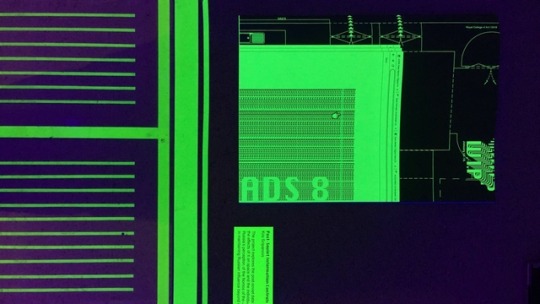
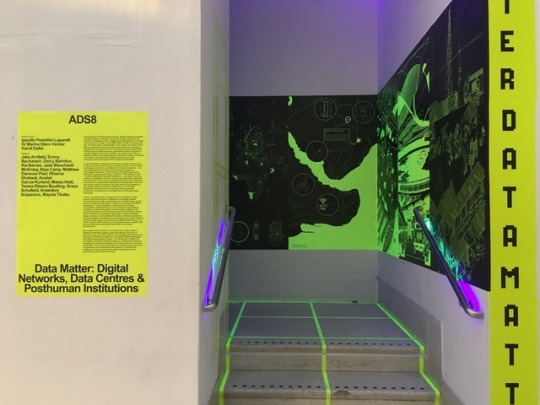

Royal College of Arts_ Work In Progress Exhibition 2018-19
ADS8: Data Matter: Digital Networks, Data Centres & Posthuman Institutions in collaburation with OMA.eu and Het Nieuwe Instituut in Rotterdam
#architecture school#artists on tumblr#art#architecture#exhibition#art exhibit#exhibitdesign#theoretical architecture#architecture research#reserch exhibition#architecture student#OMA#Het Nieuwe Instituut#Data Matter#post-human#UV#royal college of art#RCA#ADS8#london art#london#london artist#london exhibition
2 notes
·
View notes
Text

The Dividual by Kristofers Scipanovs (RCA Media Studies Project)
Through the merging and overlapping of the commercial and the political, there has been an incentive to use big data to surveil human activity. This has implications on privacy from individual autonomy to social contexts, the dividual is created using the individual. The profiles built are now linked to surveillance systems linking the physical body to the digital, using facial recognition.
Presented is one of many publicly available datasets used to train a facial recognition algorithm. It reveals the complex interface that digital surveillance has with the individual and the inherent biases built into the system.
#architecture school#architecture#art#artists on tumblr#data#internet#surveillance#london art#london artist#representation#art and architecture#abstract art#artwork#theoretical architecture#conceptual#concept art#cyberspace#individuality#individual#dividual#deleuze
1 note
·
View note
Text

q u e u e
#photography#urban exploration#urban photography#architecture#architecture school#artists on tumblr#black and white#street photography#film phogoraphy#35mm photography#35mm film#35mm#london artist#london art#london#shorditch#backtothestreet#photographers on tumblr
2 notes
·
View notes
Text

w a t e r
#landscape photography#landscape#forest#lake#reflection#light and shadow#35mm photography#urban exploration#urban photography#art#architecture school#artists on tumblr#exploration#35mm film#35mm#wistful#summer#lomography#latvia#my photography#photographers on tumblr#photography#my art#artist#peaceful#hipster#zenit e
7 notes
·
View notes
Text






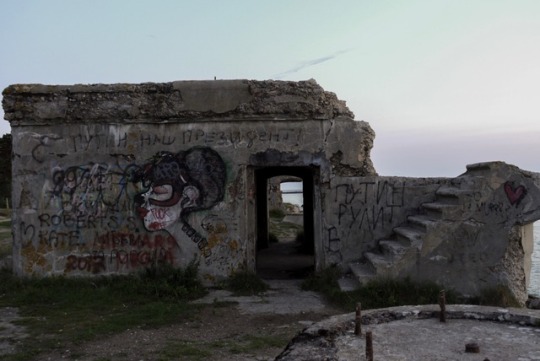

l e f t b e h i n d
Karosta was constructed in 1890-1906 as a naval base for the Russian Tsar Alexander III, and later served as a base for the Soviet Baltic Fleet. The juxtaposition of the old tsarist architecture and the communist officers blocks create an exiting space to explore. A real place that provokes.
In November 1908 the fortress was liquidated, as its construction had a strategic mistake. Except some of the cannons which were dismantled and taken to the Kaunas Fortress in Lithuania. However, the remains of the Tsarist Russia fortress and also the later, more modern fortress, still stand today.
#photography#urban#urban exploration#urban photography#architecture#art#street photography#architecture school#architecture photography#fine art photography#my photography#photooftheday#soviet#my art#art and architecture#fine art#street art#artist#artists on tumblr#photographers on tumblr
4 notes
·
View notes
Text

A new series is on it’s way based, on the abandoned soviet military port town of ‘Karosta’ in Latvia.
#urban#photography#urban exploration#urban photography#architecture#art#street photography#abandoned#fine art photography#abstract art#fine art#street art#artwork#artists on tumblr#my art#artist#london art#london artist#london photography#deralchimist#deralict#soviet#architecture school#architecture student#soviet architecture
5 notes
·
View notes
Photo

Study inspired by Filippo Lippi’s Madonna and Child (my human form still needs a lot of work)
#painting#madonna#fresco#portrait#acrylic#artists on tumblr#my art#artist#art#artwork#original#portriture#renaissance#filippo lippi#1465#london art#london artist#london#london sketch#sketches#sketch#quick sketch#human study#architecture student
7 notes
·
View notes
Photo





Life drawing session No. 4
#life drawing#ink drawing#sketches#my art#original anime illustration#painting#sketch#human form#human experience#female#artists on tumblr#art#fine art#absract#shading#london sketch#london artist#london#london art#tonal study#lineart#linedrawing#fineart#artwork#drawing#ink#krisscip#architecture student
5 notes
·
View notes
Photo
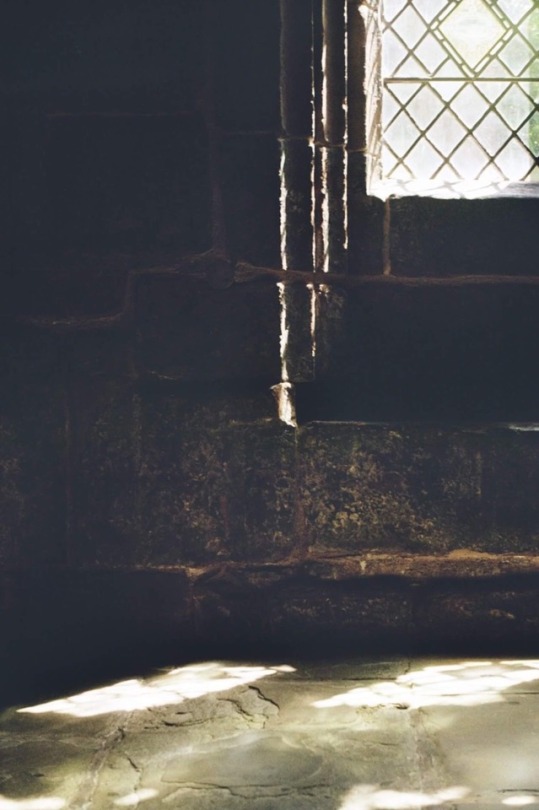
Genius Loci
#35mm photography#35mm film#35mm#architecture photography#urban photography#black and white photography#photography#my photography#original phography#street photography#photographersofinstagram#vsco#photographers on tumblr#london#london photography#london artist#street art#artists on tumblr#my art#artist#art#lomography#chester#Chester
6 notes
·
View notes
Photo


Life drawing session No.3
#artists on tumblr#art#human form#human experience#charcoal#shading#observation#my art#artist#london sketch#london#london art#london artist#sketches#human study#life drawing#lifedrawing#quick sketch#tonal drawing#drawing#artwork#architecture student
2 notes
·
View notes
Photo
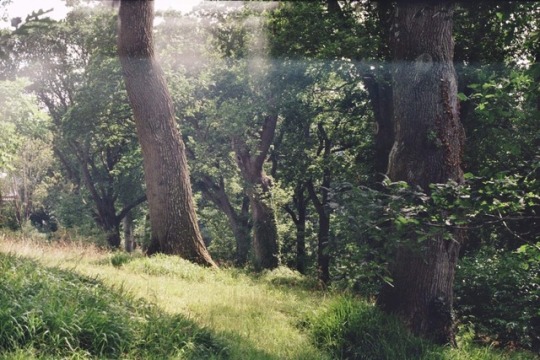
Tranquil No.3
#photographers on tumblr#35mm photography#35mm film#forest#35mm#landscape#landscape photography#light and shadow#light#nature#photography#film phogoraphy#lomography#hipster#hipstamatic#artists on tumblr#my art#art#london art#london#london artist#climate change#original phography#original photographers
958 notes
·
View notes
Photo


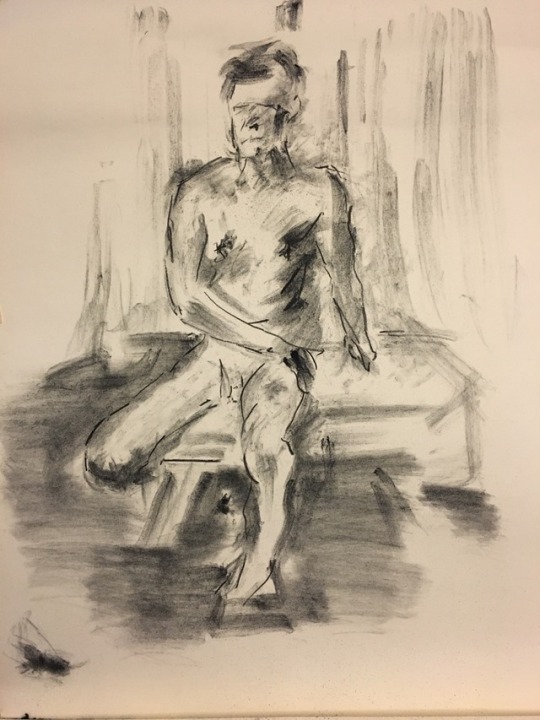
Life drawing No.2- Tonal Study
#artists on tumblr#street art#my art#artist#art#fine art#fineart#charcoal#sketches#quick sketch#life drawing#lifedrawing#tonal drawing#tonal study#london art#london artist#london sketch#human form#human#human experience#light study#model#drawing
2 notes
·
View notes
Photo

Urban Sketching
#urban watercolour#watercolour#watercolour art#urban sketch#sketch#quick sketch#street art#artists on tumblr#my art#artist#st pauls cathedral#artwork#urban exploration#london art#london artist#london#architecture drawing#architecture#architecture school#architecture student
4 notes
·
View notes
